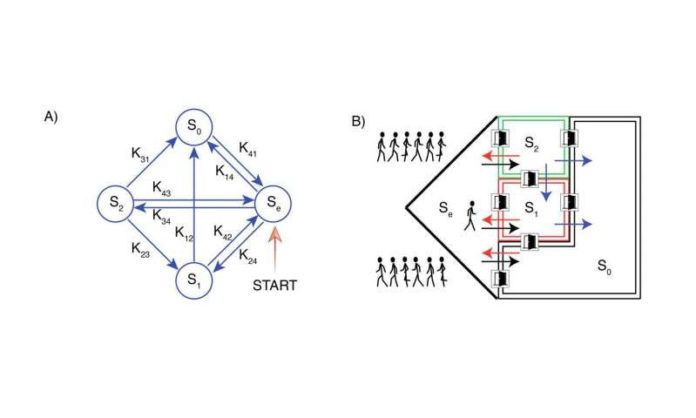Logic machines in computing work by binary switching paradigm like transistors. But in the case of the behavior in physical systems, its randomness is usually considered a drawback. To take advantage of the inherent randomness that governs the behavior of physical systems at the nanoscale, scientists have developed nanoscale logic machines.
Scientists from the University of Liege have developed nanoscale logic machines from single atoms. It consists of individual phosphorous atoms. The atoms are precisely positioned and embedded in a silicon crystal at a density of about 200 billion atoms per square centimeter. Each electron in the atom moves randomly due to quantum tunneling. Due to the different energy level of electrons, each atom can occupy one of four possible states. And because of consistent transition of atoms in four states, electrons move randomly in and out of the atom and change their energy levels.
Coauthor Francoise Remacle said, “Our approach shows the possibility of a new class of tiny analog computers that can solve computationally difficult problems by simple statistical algorithms running in nanoscale solid-state physical devices.”
According to researchers, this architecture is useful to simulate certain computational problems. Scientists primarily looked at a relatively simple example of flowing visitors in a maze that consist four rooms connected by gates. In this maze, they have to find the optimal combination of rates for opening the gates to maximize the time that visitors spend in one particular room.
To solve this problem by conventional computing, scientists need lots of effort. Although, it typically involves analyzing the dynamics of visitors in the maze to gather information.
By using newly developed nanoscale logic machines, scientists could easily found the solution more directly. It’s because the problem is physically embodied by the atomic “hardware” itself.
Scientists then used scanning tunneling spectroscopy to measure electron’s tunneling rates. They just controlled the voltage to the tip of the microscope along with the distance between the tip and the substrate. Due to this combination of voltage and tip distances, atom takes a long time to occupy a certain state.
And this variation makes electrons in an atom to have different transport properties. That means, atoms will have better optimal values than others.
Remacle said, “Nanoscale and molecular devices used as hardware for logic have potentially many advantages, from high packing density and low-power dissipation to the high number of states that can be used to encode information.”
“However, their dynamics is ruled by probabilistic law because of the fundamental stochastic nature of thermally activated and quantum processes. The most straightforward application is then to use nanoscale devices for the implementation of probabilistic algorithms that require significant overhead in conventional deterministic hardware. For example, the mere sampling a pseudo-random number from a probability distribution requires hundreds of instructions on a modern computer while electron tunneling at truly random times is a natural process.”
Now scientists are planning to build other nanoscale logic machines whose implementation will require positioning the components with extreme precision.
